List of subcamps of Flossenbürg
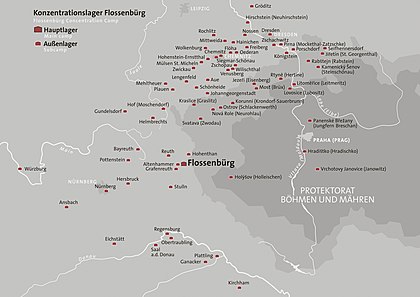
The expansion of Flossenbürg concentration camp led to the establishment of subcamps, the first of which was established at Stulln in February 1942 to provide forced labor to a mining company. Many of them were located in the Sudetenland or across the border in the Protectorate of Bohemia and Moravia.[1] The vast majority were established after 1 March 1944.[2] Initially, the subcamps were not involved in armaments production, which changed in the second half of 1944 due to a large influx of available prisoners and the activities of the Jägerstab, which sought to increase German aircraft production.[1] The Jägerstab's dispersal of aircraft production spurred the expansion of the subcamp system in 1944[3] and resulted in the establishment of the two largest of the subcamps, at and Leitmeritz.[1] In the second half of 1944, 45 new camps were created, compared to three camps in the previous six months. The staffing these new camps was increasingly filled by Luftwaffe soldiers, Volksdeutsche SS men (ethnic Germans from outside the Reich), and SS women, for the subcamps containing female prisoners.[4] By April 1945, 80% of the prisoners were at the subcamps.[5] Of all the concentration camp systems, Flossenbürg's subcamp system was one of the three most important to the economy of Nazi Germany, along with Dachau's and Mauthausen's.[6]
List of subcamps[]
| Name | Image | Location | Dates of operation | Prisoners | Deaths | Description |
|---|---|---|---|---|---|---|
| Altenhammer | 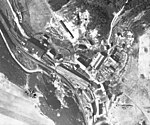
|
, Bavaria 49°43′50.9″N 12°19′35.0″E / 49.730806°N 12.326389°E | Late 1944 or early 1945–16 April 1945 | 552 (March 1945) | More than 45 | Began in 1942 as a work detachment from Flossenbürg main camp, 2 kilometres (1.2 mi) away, for the Ernst Stich Quarry. In 1944, production lines for parts of the Messerschmitt Bf 109 fighter were established and initially manned by prisoners from the main camp. The barracks were built and prisoners moved in around the end of 1944. The camp was guarded mostly by Luftwaffe guards and conditions were poor. On 16 April 1945 the prisoners were transferred back to the main camp.[7][8] |
| Ansbach | Rezathalle, Ansbach, Bavaria 49°43′50.9″N 12°19′35″E / 49.730806°N 12.32639°E | 13 March – 4 April 1945 | 700 | 72 | Prisoners were held in the Rezathalle fair pavilion and worked at repairing bomb damage to the nearby rail lines. Rations were very low which contributed to the death rate. On 4 April, 93 prisoners were sent to while the rest were sent back to the main camp.[9][10] | |
| Aue | Aue, Saxony 49°4′59.884″N 11°16′0.116″E / 49.08330111°N 11.26669889°E | 24 November 1944 – late April 1945 | 20 | None | Skilled Hungarian Jews worked on a project to build an SS leadership training school.[11][12] | |
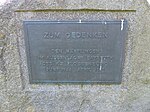
|
Bayreuth, Bavaria 49°57′0″N 11°34′59.876″E / 49.95000°N 11.58329889°E | 13 June 1944 – 11 April 1945 | 63 | None at the camp. Eleven died as a result of their imprisonment. | Prisoners, who had been selected for their skills at Neuengamme, worked at the "Institute of Physical Research", under the leadership of physicist to develop remote-controlled bombs at the New Cotton Mill owned by Bodo Lafferentz. Conditions were relatively good, but the role of the Wagner family in the subcamp has attracted interest.[13][14] | |
| Brüx | Brüx, Reichsgau Sudetenland (now Most, Czech Republic) 50°31′0.48″N 13°31′53.8″E / 50.5168000°N 13.531611°E | 1 September – 7 October 1944 | 1,000 | 4 | 1,000 prisoners arrived on 1 September on a transport from Sachsenhausen. Little is known of the conditions, although prisoners probably worked in coal mines and tank production. On 7 October, they were transferred back to the Flossenbürg main camp and thence to Leitmeritz.[15][16] | |
| Chemnitz | 
|
Chemnitz, Saxony 50°49′59.9″N 12°55′0.12″E / 50.833306°N 12.9167000°E | 24 October 1944 – 8 May 1945 | 510 | 2 | The prisoners, all women who had been transported from Auschwitz, produced metal parts for airplanes and machine guns for , 12-hour days six days a week. Nutrition was lacking but the physical brutality of guards was less than elsewhere.[17][18] |
| Dresden Behelfsheim | Dresden, Saxony 51°3′3.6″N 13°44′0.96″E / 51.051000°N 13.7336000°E | 12 April 1945 – | 103 | Unknown | Many of the prisoners were in poor health due to previous imprisonment.[19] | |
| Dresden Bernsdorf | 
|
Dresden, Saxony 51°2′31.553″N 13°47′50.6″E / 51.04209806°N 13.797389°E | 24 November 1944 – 14 April 1945 | 500 | 16 from mistreatment and additional victims of bombing of Dresden and executions | Most prisoners were Polish Jews who came from the Łódź Ghetto via Stutthof. Already in bad condition, they suffered from poor living conditions and forced labor producing machine guns for Bernsdorf & Co. After the bombing of Dresden on 13 February, the prisoners were sent to Mockethal except 50 men who were forced to clear bomb debris.[20][21] |
| Dresden (SS Engineers' Barracks) | 
|
Dresden, Saxony 51°5′31.196″N 13°43′47.64″E / 51.09199889°N 13.7299000°E | June 1942 – 15 April 1945 | 198 (December 1943) | 3–7 | This was the second and longest-lasting of the Flossenbürg subcamps. Prisoners worked mostly on construction for the SS-Bauleitung Dresden but were also drafted for other construction projects and sold to private firms.[22][23] |
| Dresden Universelle | 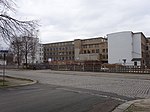
|
Dresden, Saxony 51°2′24.36″N 13°42′56.88″E / 51.0401000°N 13.7158000°E | 9 October 1944 – mid-April 1945 | 700 | 3 | Many of the women in the camp had already spent years in other concentration camps. In Dresden, they worked and slept in the same building at 14 Florastrasse, a supplier for Junkers aircraft company. During the bombing of Dresden, some women may have died and others managed to escape, while the remainder were taken to Mockethal and returned in mid-March, at which point they worked in clearing debris.[24][25] |
| Dresden | 
|
Dresden, Saxony 51°4′40″N 13°43′39″E / 51.07778°N 13.72750°E | 9 October 1944 – mid-April 1945 | 600 | 2 | Female prisoners, mostly Russian and Polish, worked on producing time fuses, incendiary fragmentation projectiles for antiaircraft cannons, and other weapons. Food rations were insufficient and the female SS guards frequently beat prisoners. In mid-April they were deported to Leitmeritz but all escaped near the Sudeten border.[26][27] |
| Dresden-Reick | Dresden, Saxony 51°00′34″N 13°48′33″E / 51.00944°N 13.80917°E | October 1944 | 23 | There were three murders. The rest of the deaths came mostly from ill Jewish prisoners who were in poor condition due to previous imprisonment at Auschwitz and Bergen-Belsen.[28][29] | ||
| Dresden-Friedrichstadt | 
|
Dresden-Friedrichstadt station, Dresden, Saxony 51°03′36″N 13°41′33″E / 51.06000°N 13.69250°E | 12 September 1944–late February 1945 | 597 (November 1944) | 89 | Prisoners had to repair damaged railroad cars for RAW. Food was inadequate while the SS guards severely mistreated prisoners. Some were shot “while attempting to escape”. [30][31] |
| Dresden Reichsbahn | 24 March–May 1945 | 500 | Prisoners worked also for RAW and lived in five-tiered bunk beds near the railroad station hall. The unsanitary conditions led municipal authorities to fear a typhus epidemic.[32][33] | |||
| Eichstätt | 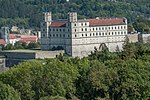
|
Willibaldsburg Castle, Eichstätt, Bavaria 48°53′40.92″N 11°10′7.68″E / 48.8947000°N 11.1688000°E | October 1944 – January 1945 | 22 | None | The prisoners—Dutch, Polish, and Czech—worked for Nuremberg SS Signal Reserve Battalion and stayed in Willibaldsburg Castle.[34] |
| Eisenberg | 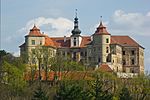
|
, Reichsgau Sudetenland (now Jezeří Castle in the Czech Republic) 50°33′14.94″N 13°30′17.86″E / 50.5541500°N 13.5049611°E | 21 June 1943 – 27 April 1945 | 30 | None | Most prisoners worked in the kitchen for a POW camp for French officers located at the same site. After the SS guards left, the prisoners left the castle and walked to the front line with the United States Army.[35][36] |
| Falkenau, Reichsgau Sudetenland (now Sokolov, Czech Republic) 50°10′59.88″N 12°37′59.876″E / 50.1833000°N 12.63329889°E | December 1943 – around July 1944 | 750 | None | Women from a variety of countries produced aircraft parts for Ignaz Schmieger AG. From March 1944, they also built the barracks that would become . Conditions, especially food, were better than elsewhere, and the women lived in a textile factory. There were 18 Luftwaffe guards and 21 SS women.[37] | ||
| Flöha | 
|
Flöha, Saxony 50°50′54″N 13°04′53″E / 50.84833°N 13.08139°E | 18 March 1944–14 April 1945 | 611 (February 1945) | 42 at the camp | Prisoners, mostly Russian and French men, worked for the Flöha Tüllfabrik, which had been turned over to production by , an aircraft manufacturer, in order to disperse production. Some skilled prisoners deliberately sabotaged production despite the risk to themesleves. Fifty-seven prisoners were executed during a death march towards Theresienstadt.[38][39] |
| Freiberg | Freiberg, Saxony 50°55′0.1″N 13°22′0.1″E / 50.916694°N 13.366694°E | 31 August 1944 – 14 April 1945 | 1002 | At least 5 | The prisoners, mostly Polish Jewish women, arrived on three transports from Auschwitz. They worked for Arado, an aircraft manufacturer. Conditions were fairly good until they were moved to purpose-built barracks in December 1944, but the nutrition was inadequate. In April 1945, remaining prisoners were evacuated to Mauthausen concentration camp.[40][41] | |
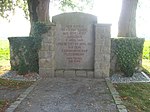
|
, Bavaria 48°42′53″N 12°43′34″E / 48.71472°N 12.72611°E | 21 February 1945 – 24 or 25 April 1945 | 500–900 | 183 | Prisoners worked for the Luftwaffe at Ganacker airfield. Initially, they were housed at the airfield, but later they moved to improvised tents in a forest clearing 2 kilometers (1.2 miles) away. Poor housing, insufficient food, as well as a contaminated water supply caused many deaths. Forty-five prisoners, too weak to be moved, were murdered during the evacuation of the camp. Other prisoners died during the death march towards Traunstein.[42][43] | |
| Grafenreuth | , Bavaria 49°42′0″N 12°18′9.72″E / 49.70000°N 12.3027000°E | June 1943–20 or 21 April 1945 | 150 (August 1944) | One | Prisoners worked on the nearby Weiden-Floss-Eslarn railway, unloading cars, and others built a clothing factory operated by the SS. The first SS commander, Kübler, embezzled prisoner rations and beat them; his successor Voigt tried to ensure that prisoners were not mistreated. Sick prisoners were transported to Flossenbürg where some died.[44][45] | |
| Graslitz | 
|
Graslitz, Reichsgau Sudetenland (now Kraslice, Czech Republic) 50°19′59.884″N 12°31′0.116″E / 50.33330111°N 12.51669889°E | 7 August 1944 | 877 (April 1945) | None at the camp | Prisoners, many of whom were Romani, did forced labor for Luftfahrtgerätewerk Hakenfelde GmbH, a subsidiary of Siemens which produced aircraft parts including navigation equipment, flight instruments, and electronics. Some prisoners had to clear bomb debris from the railway station in early 1945.[46][47] |
| Gröditz | 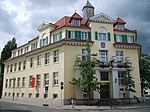
|
Gröditz, Saxony 51°13′0.124″N 14°37′0.120″E / 51.21670111°N 14.61670000°E | 27 September 1944 – 17 April 1945 | 743 (April 1945) | 220 as a result of camp conditions, 184 in a massacre | Prisoners worked and were quartered in the factory, which operated on the principle of "extermination through work"—conditions were intended to cause the death of prisoners. On 17 April, 184 prisoners deemed unable to march were shot in the Koselitz sandpits nearby; the remainder were marched to Leitmeritz and Theresienstadt.[48][49] |
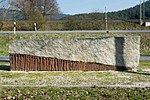
|
, Bavaria 50°17′5.057″N 11°18′6.167″E / 50.28473806°N 11.30171306°E | 12 September 1944 – 13 April 1945 | 121 | 2 and the camp, 18 at Flossenbürg (all men) | Most of the prisoners were Polish Jewish women from Kraków-Płaszów concentration camp; in November 1944, 21 Jewish men arrived. Prisoners were forced to build camp barracks, load and unload trains, and work for an aerial intelligence unit which had been relocated from Płaszów.[50][51] | |
| Hainichen | Hainichen, Saxony 50°58′10.034″N 13°7′19.556″E / 50.96945389°N 13.12209889°E | 8 September 1944 – mid-April 1945 | 500 | 5 at the camp, others died during and after the death march | The prisoners were mostly Polish and Hungarian Jewish women from Transylvania and Carpathian Ruthenia, who were forced to work for Framo producing machine guns, launchers and mortars. The company paid the SS 4 Reichsmarks daily per prisoner, a total of 42,526 RM. Many of the guards were members of the Russian Liberation Army. In April 1945, they were evacuated to Theresienstadt.[52][53] | |
| Happurg | 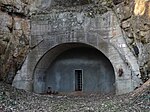
|
Happurg, Bavaria 49°30′0″N 11°28′0.116″E / 49.50000°N 11.46669889°E | [54] | |||
| Helmbrechts | 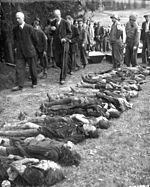
|
Helmbrechts, Bavaria 50°13′54″N 11°42′34″E / 50.23167°N 11.70944°E | [55] | |||
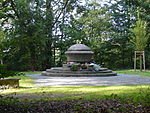
|
Hersbruck, Bavaria 49°30′42.8″N 11°26′37″E / 49.511889°N 11.44361°E | [56] | ||||
| Hertine | Hertine, Reichsgau Sudetenland (now Rtyně nad Bílinou, Czech Republic) 50°36′14″N 13°53′18″E / 50.60389°N 13.88833°E | [57] | ||||
| Hof-Moschendorf | Hof, Bavaria 50°17′40″N 11°56′06″E / 50.29444°N 11.93500°E | [58][59] | ||||
| Hohenstein-Ernstthal | Hohenstein-Ernstthal, Saxony 50°47′52″N 12°42′47″E / 50.79778°N 12.71306°E | [60][61] | ||||
| Hohenthan | Hohenthan, Bavaria 49°47′59″N 12°23′04″E / 49.79972°N 12.38444°E | 14 February – 22 April 1945 | 6 | None | [62] | |

|
Holleischen, Reichsgau Sudetenland (now Holýšov, Czech Republic) 49°36′21″N 13°05′54″E / 49.60583°N 13.09833°E | 11 | The women's camp was dissolved in January 1945 while the men's camp was liberated by Czech partisans on 3 May 1945.[63] | |||
| Hradischko, Protectorate of Bohemia and Moravia (now Hradištko, Czech Republic) 49°52′03″N 14°25′21″E / 49.86750°N 14.42250°E | [64] | |||||
| Janowitz | 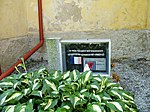
|
Janowitz, Protectorate of Bohemia and Moravia (now Vrchotovy Janovice, Czech Republic) 49°40′17″N 14°34′21″E / 49.67139°N 14.57250°E | [65] | |||
| Johanngeorgenstadt | 
|
Johanngeorgenstadt, Saxony 50°25′52″N 12°43′37.6″E / 50.43111°N 12.727111°E | [66] | |||
| Jungfern-Breschan | Jungfern-Breschan, Protectorate of Bohemia and Moravia (now Panenské Břežany, Czech Republic) 50°12′59″N 14°26′32″E / 50.21639°N 14.44222°E | 14 February 1944 – 8 May 1945 | Liberated by the Red Army on 8 May 1945.[67] | |||
| Kirchham | Kirchham, Bavaria 48°22′03″N 13°17′06″E / 48.36750°N 13.28500°E | [68] | ||||
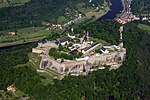
|
Königstein Fortress, Königstein, Bavaria 50°55′8″N 14°3′24″E / 50.91889°N 14.05667°E | 15 November 1944 – 17 March 1945 | [69] | |||
| , Reichsgau Sudetenland (now Korunní, Czech Republic) 50°20′24″N 13°4′15.6″E / 50.34000°N 13.071000°E | Forced labor for Sudetenquell GmbH.[70] | |||||
| Leitmeritz | 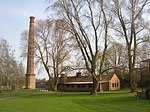
|
Leitmeritz, Reichsgau Sudetenland (now Litoměřice, Czech Republic) 50°32′28″N 14°06′44″E / 50.54111°N 14.11222°E | 24 March 1944–8 May 1945 | 9,000 (April 1945) | 4,500 | The largest subcamp of Flossenbürg, it was established as part of an effort to disperse and increase war production. Prisoners were forced to work in the caverns Richard I and II, producing Maybach HL230 tank engines for Auto Union (now Audi) and preparing the second site for intended production of tungsten and molybdenum wire and sheet metal by Osram. In the last weeks of the war, the camp became a hub for death marches, until its dissolution by the German surrender.[71] |
| Lengenfeld, Bavaria 50°34′33″N 12°21′01″E / 50.57583°N 12.35028°E | [72] | |||||
| Lobositz | 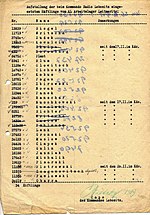
|
Lobositz, Reichsgau Sudetenland (now Lovosice, Czech Republic) 50°30′50″N 14°02′53″E / 50.51389°N 14.04806°E | [73] | |||
| Mehltheuer | Mehltheuer, Bavaria 50°32′35″N 12°02′09″E / 50.54306°N 12.03583°E | [74] | ||||
| Meissen-Neuhirschstein | 
|
, Hirschstein, Saxony 51°15′6.5″N 13°24′1.1″E / 51.251806°N 13.400306°E | [75] | |||
| Mittweida | Mittweida, Saxony 50°59′04″N 12°57′55″E / 50.98444°N 12.96528°E | [76] | ||||
| Mockethal-Zatzschke | , Saxony 50°58′58″N 13°57′09″E / 50.98278°N 13.95250°E | [77] | ||||
| Mülsen St. Micheln | Mülsen St. Micheln, Saxony 50°45′04″N 12°34′10″E / 50.75111°N 12.56944°E | [78] | ||||
| Neurohlau | 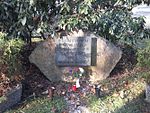
|
Neurohlau, Reichsgau Sudetenland (now Nová Role, Czech Republic) 50°16′37″N 12°46′36″E / 50.27694°N 12.77667°E | [79] | |||
| Nossen | Nossen, Saxony 51°03′45″N 13°16′39″E / 51.06250°N 13.27750°E | [80] | ||||
| Nuremberg (SS-Barracks) | 
|
Nuremberg, Bavaria 49°25′49″N 11°05′52″E / 49.43028°N 11.09778°E | [81] | |||
| Nuremberg (Siemens-Schuckertwerke) | 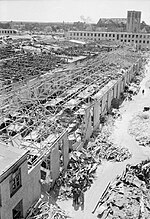
|
Nuremberg, Bavaria 49°24′32″N 11°05′05″E / 49.40889°N 11.08472°E | [82] | |||
| Obertraubling | 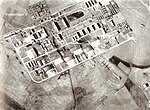
|
Obertraubling, Bavaria 48°58′54″N 12°11′36″E / 48.98167°N 12.19333°E | [83] | |||
| Oederan | Oederan, Saxony 50°51′31″N 13°10′43″E / 50.85861°N 13.17861°E | [84] | ||||
| Plattling | 
|
Plattling, Bavaria 48°46′35″N 12°52′22″E / 48.77639°N 12.87278°E | [85] | |||
| Plauen, Saxony 50°30′53″N 12°07′38″E / 50.51472°N 12.12722°E | [86] | |||||
| Plauen, Saxony 50°31′31″N 12°06′45″E / 50.52528°N 12.11250°E | [87] | |||||
| Plauen, Saxony 50°29′36″N 12°06′18″E / 50.49333°N 12.10500°E | [88] | |||||
| Porschdorf | Porschdorf, Saxony 50°56′33″N 14°08′18″E / 50.94250°N 14.13833°E | [89] | ||||
| Pottenstein | 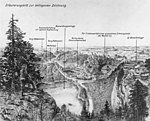
|
Pottenstein, Bavaria 49°45′41″N 11°24′52″E / 49.76139°N 11.41444°E | [90] | |||
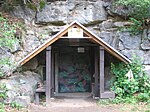
|
Böhmisch Kamnitz, Reichsgau Sudetenland (now Česká Kamenice, Czech Republic) 50°48′2.8″N 14°23′10″E / 50.800778°N 14.38611°E | [91] | ||||
| Regensburg | 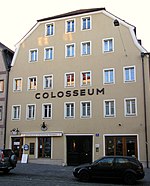
|
Regensburg, Bavaria 49°1′28.9″N 12°5′50.3″E / 49.024694°N 12.097306°E | [92] | |||
| Reuth | Reuth bei Erbendorf, Bavaria 49°50′34″N 12°07′28″E / 49.84278°N 12.12444°E | 7 | All Jehovah's Witnesses from Germany and the Netherlands.[93] | |||
| Rochlitz, Saxony 51°03′03″N 12°47′41″E / 51.05083°N 12.79472°E | [94] | |||||
| Saal an der Donau | 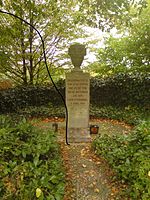
|
Saal an der Donau, Bavaria 48°53′52″N 11°58′04″E / 48.89778°N 11.96778°E | [95] | |||
| Schlackenwerth | 
|
Schlackenwerth, Reichsgau Sudetenland (now Ostrov, Czech Republic) 50°18′30″N 12°56′52″E / 50.30833°N 12.94778°E | [96] | |||
| Schönheide | Schönheide, Saxony 50°30′11″N 12°31′24″E / 50.50306°N 12.52333°E | 3 | [97] | |||
| Seifhennersdorf | Seifhennersdorf, Saxony 50°56′20″N 14°36′27″E / 50.93889°N 14.60750°E | [98] | ||||
| Siegmar-Schönau | 
|
Wanderer Works, , Saxony 50°48′59″N 12°50′48″E / 50.81639°N 12.84667°E | [99] | |||
| St. Georgenthal | St. Georgenthal, Reichsgau Sudetenland (now Jiřetín pod Jedlovou, Czech Republic) 50°52′35″N 14°34′25″E / 50.87639°N 14.57361°E | [100] | ||||
| Steinschönau | Steinschönau, Reichsgau Sudetenland (now Kamenický Šenov, Czech Republic) 50°46′27″N 14°28′24″E / 50.77417°N 14.47333°E | [101] | ||||
| Stulln | Stulln, Bavaria 49°25′30″N 12°09′14″E / 49.42500°N 12.15389°E | [102] | ||||
| Venusberg | 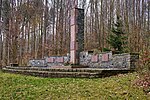
|
Venusberg, Saxony 50°41′58″N 13°00′50″E / 50.69944°N 13.01389°E | [103] | |||
| Wilischthal | , Saxony 50°43′29″N 13°03′23″E / 50.72472°N 13.05639°E | [104] | ||||
| Wolkenburg | 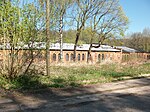
|
, Saxony 50°54′00″N 12°40′11″E / 50.90000°N 12.66972°E | [105] | |||
| Würzburg | 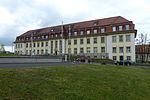
|
Würzburg, Bavaria 49°47′09″N 9°57′15″E / 49.78583°N 9.95417°E | [106] | |||
| Zschachwitz | , Dresden, Saxony 50°59′27″N 13°50′40″E / 50.99083°N 13.84444°E | [107] | ||||
| Zschopau | 
|
DKW-Werke, Zschopau, Saxony 50°44′16″N 13°03′56″E / 50.73778°N 13.06556°E | [108] | |||
| Zwickau | 
|
Zwickau, Saxony 50°43′58″N 12°28′29″E / 50.73278°N 12.47472°E | [109] | |||
| Zwodau | 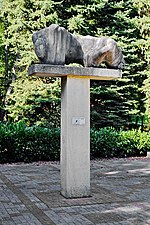
|
Zwodau, Reichsgau Sudetenland (now Svatava, Czech Republic) 50°11′43″N 12°37′12″E / 50.19528°N 12.62000°E | [110] |
References[]
Citations[]
- ^ Jump up to: a b c Fritz 2009, p. 567. sfn error: multiple targets (11×): CITEREFFritz2009 (help)
- ^ Buggeln 2015, p. 33.
- ^ Uziel 2011, p. 182.
- ^ Fritz 2009, p. 568. sfn error: multiple targets (11×): CITEREFFritz2009 (help)
- ^ Fritz 2009, p. 569. sfn error: multiple targets (11×): CITEREFFritz2009 (help)
- ^ Buggeln 2015, p. 11.
- ^ Fritz 2009, p. 570. sfn error: multiple targets (11×): CITEREFFritz2009 (help)
- ^ KZ-Gedenkstätte Flossenbürg 2020, Altenhammer.
- ^ Schmidt 2009, pp. 571–572. sfn error: multiple targets (2×): CITEREFSchmidt2009 (help)
- ^ KZ-Gedenkstätte Flossenbürg 2020, Ansbach.
- ^ Fritz 2009, pp. 572–573. sfn error: multiple targets (11×): CITEREFFritz2009 (help)
- ^ KZ-Gedenkstätte Flossenbürg 2020, Aue.
- ^ Skriebeleit 2009, pp. 573–574.
- ^ KZ-Gedenkstätte Flossenbürg 2020, Bayreuth.
- ^ Fritz 2009, p. 575. sfn error: multiple targets (11×): CITEREFFritz2009 (help)
- ^ KZ-Gedenkstätte Flossenbürg 2020, Brüx.
- ^ Fritz 2009, pp. 576–577. sfn error: multiple targets (11×): CITEREFFritz2009 (help)
- ^ KZ-Gedenkstätte Flossenbürg 2020, Chemnitz.
- ^ Fritz 2009, pp. 577–578. sfn error: multiple targets (11×): CITEREFFritz2009 (help)
- ^ Brenner 2009, pp. 578–579. sfn error: multiple targets (6×): CITEREFBrenner2009 (help)
- ^ KZ-Gedenkstätte Flossenbürg 2020, Dresden Bernsdorf.
- ^ Fritz 2009, pp. 580–581. sfn error: multiple targets (11×): CITEREFFritz2009 (help)
- ^ KZ-Gedenkstätte Flossenbürg 2020, Dresden (SS Engineer's Barracks) .
- ^ Brenner 2009, pp. 582–583. sfn error: multiple targets (6×): CITEREFBrenner2009 (help)
- ^ KZ-Gedenkstätte Flossenbürg 2020, Dresden Universelle.
- ^ Fritz 2009, pp. 584–585. sfn error: multiple targets (11×): CITEREFFritz2009 (help)
- ^ KZ-Gedenkstätte Flossenbürg 2020, Dresden Goehle-Werk.
- ^ Fritz 2009, pp. 586–587. sfn error: multiple targets (11×): CITEREFFritz2009 (help)
- ^ KZ-Gedenkstätte Flossenbürg 2020, Dresden-Reick.
- ^ Fritz 2009, pp. 588–589. sfn error: multiple targets (11×): CITEREFFritz2009 (help)
- ^ KZ-Gedenkstätte Flossenbürg 2020, Dresden (Railway Repair Works).
- ^ Fritz 2009, p. 589. sfn error: multiple targets (11×): CITEREFFritz2009 (help)
- ^ KZ-Gedenkstätte Flossenbürg 2020, Dresden Reichsbahn.
- ^ KZ-Gedenkstätte Flossenbürg 2020, Eichstätt.
- ^ Adam 2009, p. 590.
- ^ KZ-Gedenkstätte Flossenbürg 2020, Eisenberg.
- ^ Schmolling 2009, p. 591. sfn error: multiple targets (2×): CITEREFSchmolling2009 (help)
- ^ Brenner 2009, pp. 593–594. sfn error: multiple targets (6×): CITEREFBrenner2009 (help)
- ^ KZ-Gedenkstätte Flossenbürg 2020, Flöha.
- ^ Brenner 2009, pp. 595–596. sfn error: multiple targets (6×): CITEREFBrenner2009 (help)
- ^ KZ-Gedenkstätte Flossenbürg 2020, Freiberg.
- ^ Zegenhagen 2009, pp. 597–598.
- ^ KZ-Gedenkstätte Flossenbürg 2020, Ganacker.
- ^ Fritz 2009, pp. 598–600. sfn error: multiple targets (11×): CITEREFFritz2009 (help)
- ^ KZ-Gedenkstätte Flossenbürg 2020, Grafenreuth.
- ^ Schmolling 2009, pp. 600–601. sfn error: multiple targets (2×): CITEREFSchmolling2009 (help)
- ^ KZ-Gedenkstätte Flossenbürg 2020, Graslitz.
- ^ Brenner 2009, p. 603–604. sfn error: multiple targets (6×): CITEREFBrenner2009 (help)
- ^ KZ-Gedenkstätte Flossenbürg 2020, Gröditz.
- ^ Schmidt 2009, p. 605. sfn error: multiple targets (2×): CITEREFSchmidt2009 (help)
- ^ KZ-Gedenkstätte Flossenbürg et al.
- ^ Brenner 2009, pp. 605–607. sfn error: multiple targets (6×): CITEREFBrenner2009 (help)
- ^ KZ-Gedenkstätte Flossenbürg 2020, Hainichen.
- ^ Schmidt 2009, pp. 607–608. sfn error: multiple targets (2×): CITEREFSchmidt2009 (help)
- ^ KZ-Gedenkstätte Flossenbürg 2020, Helmbrechts.
- ^ KZ-Gedenkstätte Flossenbürg 2020, Hersbruck.
- ^ KZ-Gedenkstätte Flossenbürg 2020, Hertine.
- ^ Schmidt 2009, pp. 612–613. sfn error: multiple targets (2×): CITEREFSchmidt2009 (help)
- ^ KZ-Gedenkstätte Flossenbürg 2020, Hof-Moschendorf.
- ^ Brenner 2009, p. 613–614. sfn error: multiple targets (6×): CITEREFBrenner2009 (help)
- ^ KZ-Gedenkstätte Flossenbürg 2020, Hohenstein-Ernstthal.
- ^ KZ-Gedenkstätte Flossenbürg 2020, Hohenthan.
- ^ KZ-Gedenkstätte Flossenbürg 2020, Holleischen.
- ^ KZ-Gedenkstätte Flossenbürg 2020, Hradischko.
- ^ KZ-Gedenkstätte Flossenbürg 2020, Janowitz.
- ^ KZ-Gedenkstätte Flossenbürg 2020, Johanngeorgenstadt.
- ^ KZ-Gedenkstätte Flossenbürg 2020, Jungfern-Breschan.
- ^ KZ-Gedenkstätte Flossenbürg 2020, Kirchham.
- ^ KZ-Gedenkstätte Flossenbürg 2020, Königstein.
- ^ KZ-Gedenkstätte Flossenbürg 2020, Krondorf-Sauerbrunn.
- ^ Skriebeleit 2009, p. 627.
- ^ KZ-Gedenkstätte Flossenbürg 2020, Lengenfeld.
- ^ KZ-Gedenkstätte Flossenbürg 2020, Lobositz.
- ^ KZ-Gedenkstätte Flossenbürg 2020, Mehltheuer.
- ^ KZ-Gedenkstätte Flossenbürg 2020, Neuhirschstein.
- ^ KZ-Gedenkstätte Flossenbürg 2020, Mittweida.
- ^ KZ-Gedenkstätte Flossenbürg 2020, Mockethal-Zatzschke.
- ^ KZ-Gedenkstätte Flossenbürg 2020, Mülsen St. Micheln.
- ^ KZ-Gedenkstätte Flossenbürg 2020, Neurohlau.
- ^ KZ-Gedenkstätte Flossenb��rg 2020, Nossen.
- ^ KZ-Gedenkstätte Flossenbürg 2020, Nuremberg (SS-Barracks).
- ^ KZ-Gedenkstätte Flossenbürg 2020, Nuremberg (Siemens-Schuckertwerke).
- ^ KZ-Gedenkstätte Flossenbürg 2020, Obertraubling.
- ^ KZ-Gedenkstätte Flossenbürg 2020, Oederan.
- ^ KZ-Gedenkstätte Flossenbürg 2020, Plattling.
- ^ KZ-Gedenkstätte Flossenbürg 2020, Plauen (cotton mill).
- ^ KZ-Gedenkstätte Flossenbürg 2020, Plauen (Dr. Th. Horn).
- ^ KZ-Gedenkstätte Flossenbürg 2020, Plauen Industriewerke.
- ^ KZ-Gedenkstätte Flossenbürg 2020, Porschdorf.
- ^ KZ-Gedenkstätte Flossenbürg 2020, Pottenstein.
- ^ KZ-Gedenkstätte Flossenbürg 2020, Rabstein.
- ^ KZ-Gedenkstätte Flossenbürg 2020, Regensburg.
- ^ KZ-Gedenkstätte Flossenbürg 2020, Reuth.
- ^ KZ-Gedenkstätte Flossenbürg 2020, Rochlitz.
- ^ KZ-Gedenkstätte Flossenbürg 2020, Saal an der Donau.
- ^ KZ-Gedenkstätte Flossenbürg 2020, Schlackenwerth.
- ^ KZ-Gedenkstätte Flossenbürg 2020, Schönheide.
- ^ KZ-Gedenkstätte Flossenbürg 2020, Seifhennersdorf.
- ^ KZ-Gedenkstätte Flossenbürg 2020, Siegmar-Schönau.
- ^ KZ-Gedenkstätte Flossenbürg 2020, St. Georgenthal.
- ^ KZ-Gedenkstätte Flossenbürg 2020, Steinschönau.
- ^ KZ-Gedenkstätte Flossenbürg 2020, Stulln.
- ^ KZ-Gedenkstätte Flossenbürg 2020, Venusberg.
- ^ KZ-Gedenkstätte Flossenbürg 2020, Wilischthal.
- ^ KZ-Gedenkstätte Flossenbürg 2020, Wolkenburg.
- ^ KZ-Gedenkstätte Flossenbürg 2020, Würzburg.
- ^ KZ-Gedenkstätte Flossenbürg 2020, Zschachwitz.
- ^ KZ-Gedenkstätte Flossenbürg 2020, Zschopau.
- ^ KZ-Gedenkstätte Flossenbürg 2020, Zwickau.
- ^ KZ-Gedenkstätte Flossenbürg 2020, Zwodau.
Encyclopedia of Camps and Ghettos[]
- Fritz, Ulrich (2009). "Flossenbürg Subcamp System". In Megargee, Geoffrey P. (ed.). Early Camps, Youth Camps, and Concentration Camps and Subcamps under the SS-Business Administration Main Office (WVHA). Encyclopedia of Camps and Ghettos, 1933–1945. 1. Translated by Pallavicini, Stephen. Bloomington: Indiana University Press on behalf of the United States Holocaust Memorial Museum. pp. 567–569. ISBN 978-0-253-35328-3.
- Fritz, Ulrich (2009). "Altenhammer". In Megargee, Geoffrey P. (ed.). Early Camps, Youth Camps, and Concentration Camps and Subcamps under the SS-Business Administration Main Office (WVHA). Encyclopedia of Camps and Ghettos, 1933–1945. 1. Translated by Pallavicini, Stephen. Bloomington: Indiana University Press on behalf of the United States Holocaust Memorial Museum. pp. 570–571. ISBN 978-0-253-35328-3.
- Schmidt, Alexander (2009). "Ansbach". In Megargee, Geoffrey P. (ed.). Early Camps, Youth Camps, and Concentration Camps and Subcamps under the SS-Business Administration Main Office (WVHA). Encyclopedia of Camps and Ghettos, 1933–1945. 1. Translated by Pallavicini, Stephen. Bloomington: Indiana University Press on behalf of the United States Holocaust Memorial Museum. pp. 571–572. ISBN 978-0-253-35328-3.
- Fritz, Ulrich (2009). "Aue". In Megargee, Geoffrey P. (ed.). Early Camps, Youth Camps, and Concentration Camps and Subcamps under the SS-Business Administration Main Office (WVHA). Encyclopedia of Camps and Ghettos, 1933–1945. 1. Translated by Pallavicini, Stephen. Bloomington: Indiana University Press on behalf of the United States Holocaust Memorial Museum. pp. 572–573. ISBN 978-0-253-35328-3.
- Skriebeleit, Jörg (2009). "Bayreuth". In Megargee, Geoffrey P. (ed.). Early Camps, Youth Camps, and Concentration Camps and Subcamps under the SS-Business Administration Main Office (WVHA). Encyclopedia of Camps and Ghettos, 1933–1945. 1. Translated by Pallavicini, Stephen. Bloomington: Indiana University Press on behalf of the United States Holocaust Memorial Museum. pp. 573–575. ISBN 978-0-253-35328-3.
- Fritz, Ulrich (2009). "Brüx". In Megargee, Geoffrey P. (ed.). Early Camps, Youth Camps, and Concentration Camps and Subcamps under the SS-Business Administration Main Office (WVHA). Encyclopedia of Camps and Ghettos, 1933–1945. 1. Translated by Pallavicini, Stephen. Bloomington: Indiana University Press on behalf of the United States Holocaust Memorial Museum. pp. 575–576. ISBN 978-0-253-35328-3.
- Fritz, Ulrich (2009). "Chemnitz". In Megargee, Geoffrey P. (ed.). Early Camps, Youth Camps, and Concentration Camps and Subcamps under the SS-Business Administration Main Office (WVHA). Encyclopedia of Camps and Ghettos, 1933–1945. 1. Translated by Pallavicini, Stephen. Bloomington: Indiana University Press on behalf of the United States Holocaust Memorial Museum. pp. 576–577. ISBN 978-0-253-35328-3.
- Fritz, Ulrich (2009). "Dresden Behelfsheim". In Megargee, Geoffrey P. (ed.). Early Camps, Youth Camps, and Concentration Camps and Subcamps under the SS-Business Administration Main Office (WVHA). Encyclopedia of Camps and Ghettos, 1933–1945. 1. Translated by Pallavicini, Stephen. Bloomington: Indiana University Press on behalf of the United States Holocaust Memorial Museum. pp. 577–578. ISBN 978-0-253-35328-3.
- Brenner, Hans (2009). "Dresden (Bernsdorf & Co.)". In Megargee, Geoffrey P. (ed.). Early Camps, Youth Camps, and Concentration Camps and Subcamps under the SS-Business Administration Main Office (WVHA). Encyclopedia of Camps and Ghettos, 1933–1945. 1. Translated by Schroeder, Eric. Bloomington: Indiana University Press on behalf of the United States Holocaust Memorial Museum. pp. 578–580. ISBN 978-0-253-35328-3.
- Fritz, Ulrich (2009). "Dresden (SS-Pionier-Kaserne)". In Megargee, Geoffrey P. (ed.). Early Camps, Youth Camps, and Concentration Camps and Subcamps under the SS-Business Administration Main Office (WVHA). Encyclopedia of Camps and Ghettos, 1933–1945. 1. Translated by Pallavicini, Stephen. Bloomington: Indiana University Press on behalf of the United States Holocaust Memorial Museum. pp. 580–582. ISBN 978-0-253-35328-3.
- Brenner, Hans (2009). "Dresden (Universelle)". In Megargee, Geoffrey P. (ed.). Early Camps, Youth Camps, and Concentration Camps and Subcamps under the SS-Business Administration Main Office (WVHA). Encyclopedia of Camps and Ghettos, 1933–1945. 1. Translated by Schroeder, Eric. Bloomington: Indiana University Press on behalf of the United States Holocaust Memorial Museum. pp. 582–584. ISBN 978-0-253-35328-3.
- Fritz, Ulrich (2009). "Dresden (Zeiss-Ikon, Goehle-Werk)". In Megargee, Geoffrey P. (ed.). Early Camps, Youth Camps, and Concentration Camps and Subcamps under the SS-Business Administration Main Office (WVHA). Encyclopedia of Camps and Ghettos, 1933–1945. 1. Translated by Pallavicini, Stephen. Bloomington: Indiana University Press on behalf of the United States Holocaust Memorial Museum. pp. 584–586. ISBN 978-0-253-35328-3.
- Fritz, Ulrich (2009). "Dresden (Zeiss-Ikon, Werk Reick)". In Megargee, Geoffrey P. (ed.). Early Camps, Youth Camps, and Concentration Camps and Subcamps under the SS-Business Administration Main Office (WVHA). Encyclopedia of Camps and Ghettos, 1933–1945. 1. Translated by Pallavicini, Stephen. Bloomington: Indiana University Press on behalf of the United States Holocaust Memorial Museum. pp. 586–587. ISBN 978-0-253-35328-3.
- Fritz, Ulrich (2009). "Dresden-Friedrichstadt (RAW) and Dresden (Reichsbahn)". In Megargee, Geoffrey P. (ed.). Early Camps, Youth Camps, and Concentration Camps and Subcamps under the SS-Business Administration Main Office (WVHA). Encyclopedia of Camps and Ghettos, 1933–1945. 1. Translated by Pallavicini, Stephen. Bloomington: Indiana University Press on behalf of the United States Holocaust Memorial Museum. pp. 587–589. ISBN 978-0-253-35328-3.
- Adam, Alfons (2009). "Eisenberg". In Megargee, Geoffrey P. (ed.). Early Camps, Youth Camps, and Concentration Camps and Subcamps under the SS-Business Administration Main Office (WVHA). Encyclopedia of Camps and Ghettos, 1933–1945. 1. Translated by Pallavicini, Stephen. Bloomington: Indiana University Press on behalf of the United States Holocaust Memorial Museum. ISBN 978-0-253-35328-3.
- Schmolling, Rolf (2009). "Falkenau". In Megargee, Geoffrey P. (ed.). Early Camps, Youth Camps, and Concentration Camps and Subcamps under the SS-Business Administration Main Office (WVHA). Encyclopedia of Camps and Ghettos, 1933–1945. 1. Translated by Pallavicini, Stephen. Bloomington: Indiana University Press on behalf of the United States Holocaust Memorial Museum. pp. 590–593. ISBN 978-0-253-35328-3.
- Brenner, Hans (2009). "Flöha". In Megargee, Geoffrey P. (ed.). Early Camps, Youth Camps, and Concentration Camps and Subcamps under the SS-Business Administration Main Office (WVHA). Encyclopedia of Camps and Ghettos, 1933–1945. 1. Translated by Schroeder, Eric. Bloomington: Indiana University Press on behalf of the United States Holocaust Memorial Museum. pp. 593–595. ISBN 978-0-253-35328-3.
- Brenner, Hans (2009). "Freiburg". In Megargee, Geoffrey P. (ed.). Early Camps, Youth Camps, and Concentration Camps and Subcamps under the SS-Business Administration Main Office (WVHA). Encyclopedia of Camps and Ghettos, 1933–1945. 1. Translated by Pallavicini, Stephen. Bloomington: Indiana University Press on behalf of the United States Holocaust Memorial Museum. pp. 595–597. ISBN 978-0-253-35328-3.
- Zegenhagen, Evelyn (2009). "Ganacker". In Megargee, Geoffrey P. (ed.). Early Camps, Youth Camps, and Concentration Camps and Subcamps under the SS-Business Administration Main Office (WVHA). Encyclopedia of Camps and Ghettos, 1933–1945. 1. Translated by Dean, Martin. Bloomington: Indiana University Press on behalf of the United States Holocaust Memorial Museum. pp. 597–598. ISBN 978-0-253-35328-3.
- Fritz, Ulrich (2009). "Grafenreuth". In Megargee, Geoffrey P. (ed.). Early Camps, Youth Camps, and Concentration Camps and Subcamps under the SS-Business Administration Main Office (WVHA). Encyclopedia of Camps and Ghettos, 1933–1945. 1. Translated by Pallavicini, Stephen. Bloomington: Indiana University Press on behalf of the United States Holocaust Memorial Museum. pp. 598–600. ISBN 978-0-253-35328-3.
- Schmolling, Rolf (2009). "Graslitz". In Megargee, Geoffrey P. (ed.). Early Camps, Youth Camps, and Concentration Camps and Subcamps under the SS-Business Administration Main Office (WVHA). Encyclopedia of Camps and Ghettos, 1933–1945. 1. Translated by Pallavicini, Stephen. Bloomington: Indiana University Press on behalf of the United States Holocaust Memorial Museum. pp. 600–603. ISBN 978-0-253-35328-3.
- Brenner, Hans (2009). "Gröditz". In Megargee, Geoffrey P. (ed.). Early Camps, Youth Camps, and Concentration Camps and Subcamps under the SS-Business Administration Main Office (WVHA). Encyclopedia of Camps and Ghettos, 1933–1945. 1. Translated by Schroeder, Eric. Bloomington: Indiana University Press on behalf of the United States Holocaust Memorial Museum. pp. 603–604. ISBN 978-0-253-35328-3.
- Schmidt, Alexander (2009). "Gundelsdorf (with Knellendorf)". In Megargee, Geoffrey P. (ed.). Early Camps, Youth Camps, and Concentration Camps and Subcamps under the SS-Business Administration Main Office (WVHA). Encyclopedia of Camps and Ghettos, 1933–1945. 1. Translated by Pallavicini, Stephen. Bloomington: Indiana University Press on behalf of the United States Holocaust Memorial Museum. p. 605. ISBN 978-0-253-35328-3.
- Brenner, Hans (2009). "Hainichen". In Megargee, Geoffrey P. (ed.). Early Camps, Youth Camps, and Concentration Camps and Subcamps under the SS-Business Administration Main Office (WVHA). Encyclopedia of Camps and Ghettos, 1933–1945. 1. Translated by Schroeder, Eric. Bloomington: Indiana University Press on behalf of the United States Holocaust Memorial Museum. pp. 605–607. ISBN 978-0-253-35328-3.
Other[]
- "Subcamps". KZ-Gedenkstätte Flossenbürg. Bavarian Memorial Foundation. Retrieved 20 January 2020.
- Buggeln, Marc (2015). Slave Labor in Nazi Concentration Camps. Oxford University Press. ISBN 978-0-19-870797-4.
- Uziel, Daniel (2011). Arming the Luftwaffe: The German Aviation Industry in World War II. Jefferson: McFarland. ISBN 9780786488797.
Further reading[]
- Adam, Alfons (2013). "Die Arbeiterfrage soll mit Hilfe von KZ-Häftlingen gelöst werden": Zwangsarbeit in KZ-Außenlagern auf dem Gebiet der heutigen Tschechischen Republik ["The labor question should be solved with the help of concentration camp prisoners": Forced labor in the subcamps on the territory of what is now the Czech Republic] (in German). Metropol-Verlag. ISBN 978-3-86331-083-7.
- Benz, Wolfgang, ed. (2007). Flossenbürg: das Konzentrationslager Flossenbürg und seine Außenlager [Flossenbürg: Flossenbürg Concentration Camp and its Subcamps] (in German). Munich: C. H. Beck. ISBN 978-3-406-56229-7.
- Flossenbürg concentration camp
- Lists of Nazi concentration camps
- Subcamps of Nazi concentration camps
